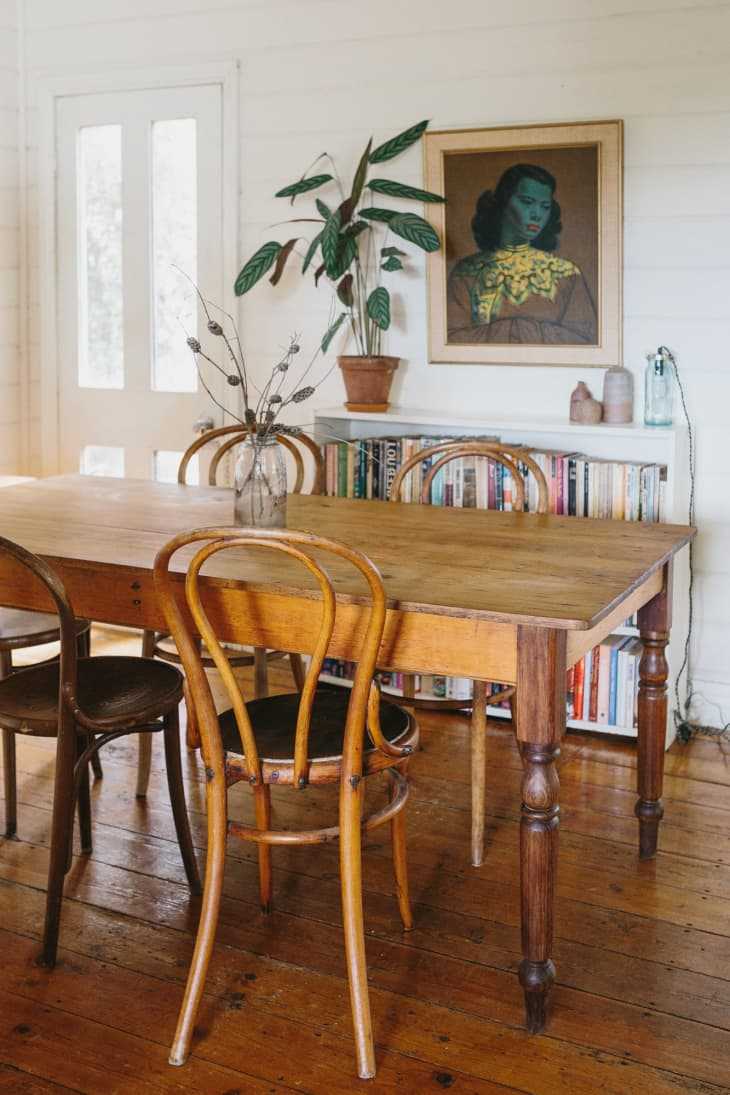In a world where buying a new sofa can be accomplished by a couple clicks, some in the design world are resisting this fast-paced, instant gratification direction in favor of a slower way. An offshoot of the Slow Movement — which began in Italy in 1986 as the Slow Food Movement (a natural reaction against a McDonald’s opening up) and has gained serious traction as of late — Slow Design focuses on process, origin and materials, while valuing the environment and the individual. If the Slow Design movement is of interest to you, read on to discover five principles to help guide your way.

Choose Sustainable Furniture
One of the key principles of the Slow Design movement is to create pieces using sustainable materials and processes. To bring this into your own home, look for pieces made from sustainably harvested wood, certified by the Forest Stewardship Council . Also look out for Cradle-to-Cradle certification, which is awarded to products that are produced in eco-friendly ways and are able to be recycled after use. Above all else, choose pieces you’ll want to keep for many years, rather than those you’ll want to replace in six months. By keeping your furniture for longer, you can slow down the rapid cycle of buying and throwing away.
Shop Slower
And by this, I don’t mean spending more time in the store , but rather, carefully consider your purchases before committing. With impulse buys and one-click online shopping leading to lots of unplanned purchases, it can be hard to remember that shopping comes with responsibility. When I’m in H&M, buying yet another $15 throw pillow, I typically don’t worry about where the pillow will end up five years from now, whether it will still be sitting on my couch—or taking up space in a landfill. But if we slow down our shopping, we can reduce waste and love everything we live with more.
Opt for Modular and Multi-Tasking Pieces
Adaptability is one of the main principles of Slow Design, as the movement values modifying to meet future needs, rather than throwing away in order to buy new. To bring this future-focused flexibility into your own home, choose items that can be used in multiple ways and various places. Modular pieces, such as Muuto’s shelving unit that lets you add on storage as needed, are showing us how modular furniture can adapt to whatever space we live in.
Shop Handmade and Fair Trade
Slow Design isn’t just about the products created, but also about the people and process behind them. Buying from a local artisan is the easiest way to find out more about the people and process that go into an object, but there are also ways of learning more when shopping online. When on Etsy, for instance, message the seller directly for more info, or search for sites , such as The Citizenry , that are committed to fair trade standards. Once you know that your new blanket is coming from a source you feel good about, you can sit back and practice the ultimate test of slow-shopping patience: Waiting for it to arrive via international shipping.
Let Your Home Grow With You
There are those who move into a new place, furnish it in a couple weeks, and are happy to be done decorating. And then there are those who see their home as an ongoing project without a specific end date. By not rushing through the process, you can build a home that reflects your life, rather than passing trends. Part of embracing a slower pace is being okay with things that are unfinished. Leave some room (and blank walls) for pieces you discover along the way or artwork you find on a future trip. If we give ourselves permission to slow down, we may find that home isn’t a static place, but it changes along with us.
Would you try slow design? Do you have any tricks for slowing down and enjoying the process of decorating and creating a home?
